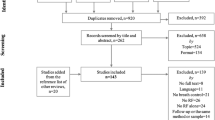Abstract
This study examined indices of parasympathetic (PNS) and sympathetic (SNS) nerve activity during exposure to heat and/or two successive bouts of exercise. Seven healthy males [age = 27.1 (3.6) years; mean (SD), maximum oxygen consumption (V˙O2 max )= 48.1 (7.6) ml · kg−1 · min−1] were assigned to each of four experimental conditions according to a randomized-block design. While in a thermoneutral (23°C) or heated (40°C, 30% relative humidity) climatic chamber subjects performed exercise on a cycle ergometer (two 30-min bouts at ≈50% V˙O2 max , separated by a 45-min recovery period, (CEx and HEx, respectively) or remained seated (CS and HS, respectively) for 2 h. The R-R intervals of the subjects' ECGs were analyzed for selected near-steady-state time periods [termed Phase I (25–40 min) and Phase II (100–115 min)] according to the method of Yamamoto and Hughson (J Appl Physiol 71:1143–1150, 1991). Total (PT), low-frequency (PLF = 0–0.15 Hz) and high-frequency (PHF = 0.15–0.5 Hz) power spectra were calculated using coarse-graining spectral analysis. Heat exposure alone did not alter autonomic balance or levels of circulating catecholamines significantly. Exercise in both environmental conditions induced a significant decrease in an index of PNS tone (PHF : PT) [PNS indicator for CS = 0.084 (0.04) vs CEx = 0.023 (0.015) and HS = 0.065 (0.027) vs HEx = 0.015 (0.009)], with an increase in catecholamine concentrations. Although the index of SNS activity (PLF:PHF) tended to rise with exercise in both environmental conditions, increments reached levels of significance only during exercise in the heat [SNS indicator for CS = 8.22 (5.58) vs CEx = 34.06 (21.73) and HS = 8.94 (5.49) vs HEx = 54.29 (49.80)]. The relative magnitudes of SNS and PNS indicators did not differ significantly between the first and second bouts of exercise. These results indicate the substantial contribution of vagal withdrawal and catecholamine secretion to the increase in heart rate that occurs during repeated moderate exercise at room temperature and the additional contribution from SNS activity during such exercise in the heat.
Similar content being viewed by others
Author information
Authors and Affiliations
Additional information
Accepted: 10 February 1997
Rights and permissions
About this article
Cite this article
Brenner, I., Thomas, S. & Shephard, R. Spectral analysis of heart rate variability during heat exposure and repeated exercise. Eur J Appl Physiol 76, 145–156 (1997). https://doi.org/10.1007/s004210050227
Issue Date:
DOI: https://doi.org/10.1007/s004210050227




